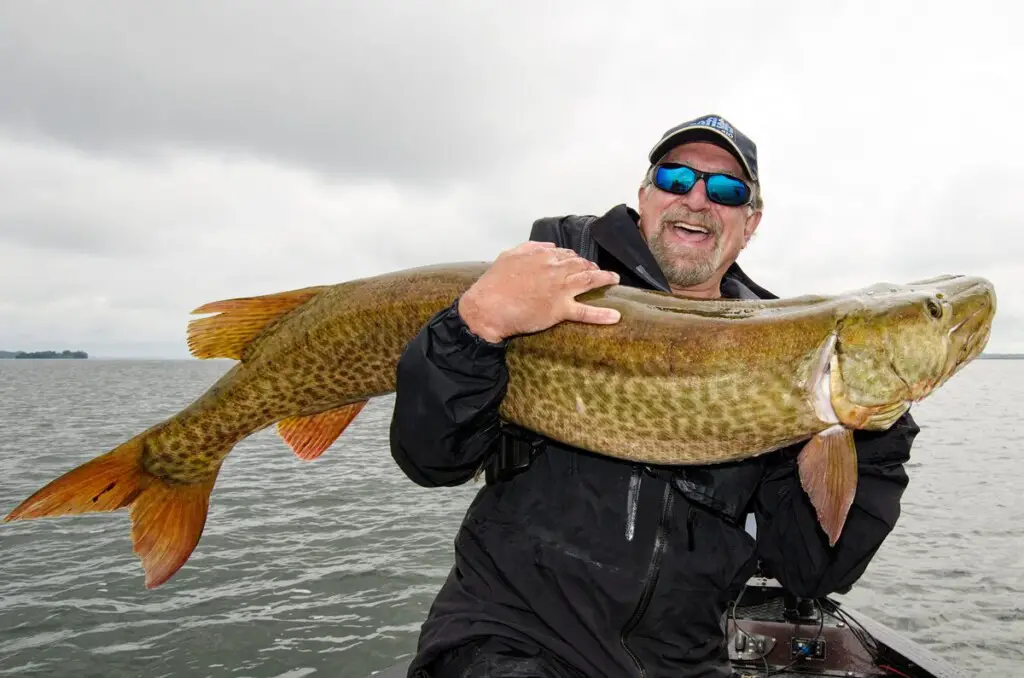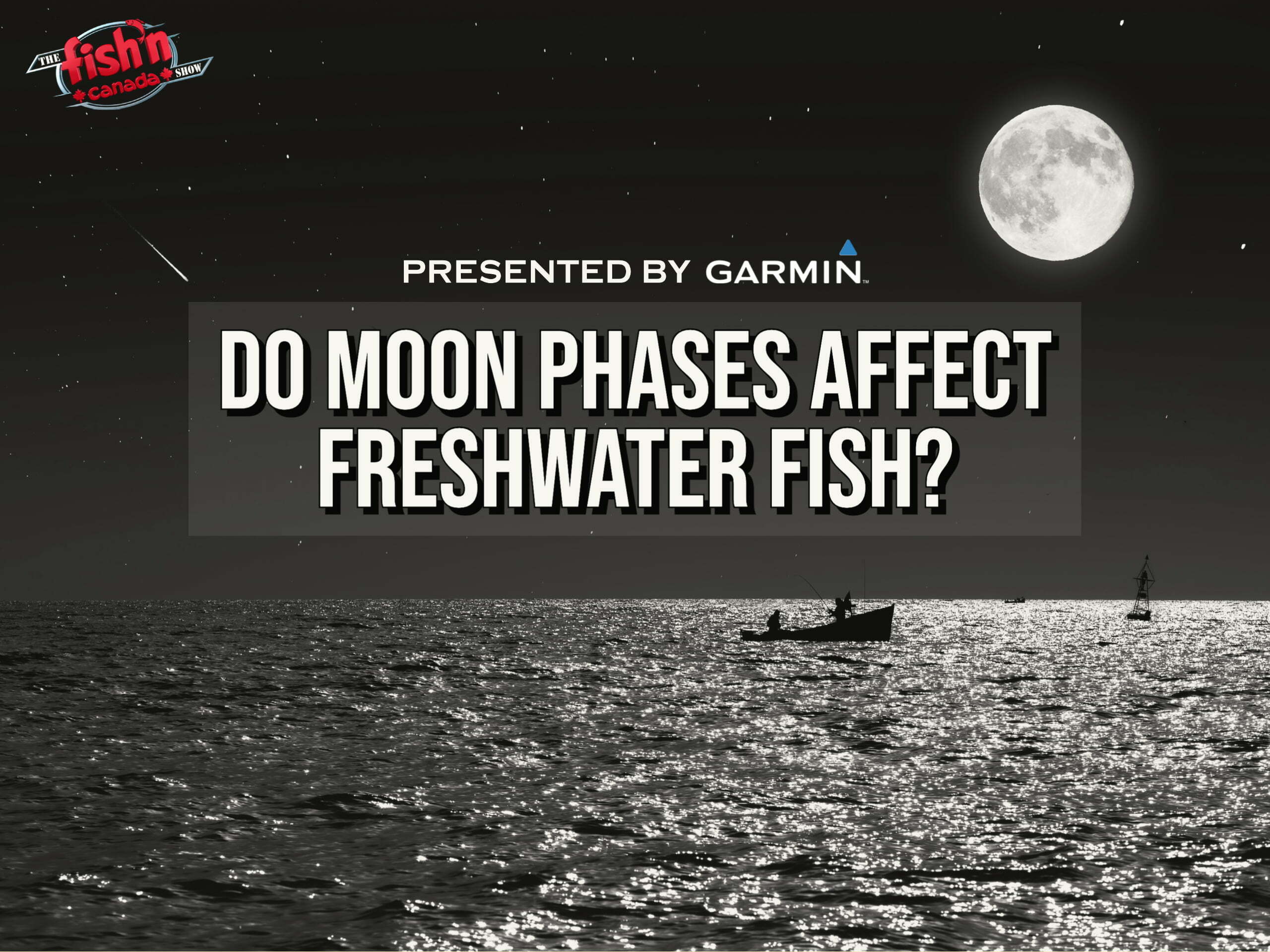The moon holds a very mystical place in the history of human culture. Since ancient times, full moons have been associated with odd or insane behaviour like sleepwalking, suicide, illegal activity, fits of violence, and, of course, werewolves—all of which have since been scientifically debunked.
When it comes to the full moon and fishing, however, debunking has been a much more difficult process. Though many experts are dismissive of the moon’s relevance in freshwater fishing, the sheer number of personal anecdotes from around the continent seem to suggest that perhaps something deeper is going on beneath the surface when the moon is full. Is there any truth behind these claims? Outdoor Journal Radio decided to find out.
FACTS OR ANECDOTES: LUNAR EFFECTS IN FRESHWATER
We know the moon creates tides in the Earth’s oceans—some as high as 50 feet, which definitely affect fish behaviour. But according to the experts, for inland waters such as the Great Lakes, tides never exceed two inches and are therefore considered to be essentially non-tidal. Heck, more extreme fluctuations in lake and river levels are produced by wind, barometric pressure changes, and man-made obstructions like dams and weirs. So why is there a lunar effect on these freshwater creatures?
Well, according to experts like Dr. Steven Cooke of Carleton University, there probably isn’t. At least from a scientific perspective, the negligible tides in our lakes and rivers simply do not move enough water to suggest they would have a significant impact. Instead, many suggest that this is simply a case of correlation being confused with causation. In other words, fishing may be good during a full moon, but the full moon may not be causing the good fishing. Here are some examples from a few of our most famous full-moon-loving fish:
BASS:

Although many bass anglers rely heavily on their solunar tables to give them that extra edge, Largemouth were perhaps the species that got the science rolling in the favour of the skeptics.
As heard on Outdoor Journal Radio, Largemouth were the subject of a 2008 study conducted by Kyle Hanson and Dr. Steven Cooke of Carleton University where they put the moon phase question to the test.
This was achieved by wiring up a research lake in eastern Ontario with telemetry tracking devices, allowing Dr. Cooke and his team to monitor every move the bass made in three dimensions. “We know how deep they are,” said Dr. Cooke, “we know whether they’re hanging out under that piece of woody debris, whether they are off that weed edge… We know where they are 24 hours per day, 7 days a week, throughout the year.”
With all these data at their disposal, the team examined what changes or patterns could be detected under certain lunar phases, and the results were somewhat surprising.
“After a year, the one thing we found,” said Dr. Cooke, “was that, in spring, fish tended to be in shallower water on the waxing and waning phases of the solunar table.” “But,” he added, “this difference was only to the order of about 30 of 40cm.”
Other than this seemingly negligible change in depth, the researchers concluded that there was “no evidence suggesting that activity levels of largemouth bass are affected by the lunar cycle.”
So what is going on when we experience better bass fishing around the full moon? Cooke argues that other factors such as temperature, season, weather, and wind are much more at play.
The Fish’n Canada team experienced this correlated increase in action first-hand when they headed out to the St. Lawrence River near Cornwall, Ontario for some full moon Smallmouth fishing. As expected, the fish were absolutely on fire, but was the moon phase really to thank?
Likely not.
As Ang says during the episode, a few other factors were likely much more involved. First off, the trip just happened to have taken place at exactly the midway point between the autumn equinox and winter solstice. Couple this with a falling barometer, cloudy skies, similar air and water temperatures, and a southwest wind, and this trip was lined up in the perfect storm for trophy Bass fishing – prime moon phase notwithstanding.
WALLEYE:
Walleye are perhaps the most notorious full-moon feeders and you will be hard-pressed to find a die-hard Walleye angler anywhere on the continent who cannot chalk one of his or her trophies up to the man in the moon. With their marble-like eyes, preference for deep, dark water, and golden scales that seem made for the moonlight, it is hard to imagine that these fish would not benefit from a little more lunar activity. Unfortunately, however, there seem to be a few more factors at play.
Although Walleye are indeed nighttime feeders [their negatively phototactic eyes see much better at night than during the day], this nighttime feeding is not limited to when the moon is full.
Human fishing activity, on the other hand, often is.
Full moons are one of the only times when nighttime visibility is good enough for large amounts of anglers to hit the water safely and effectively. This factor not only puts plenty of anglers on top of Walleye when they are in their peak feeding window but also ensures that many anglers’ experience this low-light Walleye action exclusively during the full moon.
Secondly, similar to Ang’s trip to the St. Lawrence, this increase in activity that is often attributed to the full moon also has a lot to do with seasonal timing.
For example, there is perhaps no more popular time to take advantage of the nighttime Walleye bite than during the Harvest Moon of the mid-fall. This day has become a near-holiday for anglers across much of the Great Lakes Region and sees Walleye fanatics from all over the province hitting the water as the moon begins to creep over the horizon. While the inevitable feeding frenzy is sure to occur on this famous day, many suggest that the looming winter perhaps deserves more of the credit for the increase in action.
As the winter approaches, the weeds begin to brown, and the water temperatures fall, Walleye begin to feed – a lot. As things continue to cool, the bait and perch migration draw this feeding activity closer and closer to shore, putting them right in the lap of anglers fishing the shallow, accessible bays that are so commonly targeted this time of year.
MUSKIE: THE ONE EXCEPTION?

While much of this article has been spent “debunking” the effects of moon phases on freshwater fishing, the Muskie is perhaps the one freshwater species to break the mould and show that full moons may indeed play a role in non-tidal fish activity.
This increase in behaviour was most notably highlighted during a 2014 study out of northern Minnesota. After analyzing nearly 350,000 angling catch records over a 40-year span, the researchers in this study were able to display that catches did indeed increase during the full moon and fall during the new.
This increase was a whopping… well… 5%.
Although this may not seem like a staggering figure, this appears to be the first time that non-tidal fish activity and moon phases have been unquestionably linked, regardless of other environmental factors, suggesting that there may soon come a day when our suspicions over the full moon’s impact on our favourite freshwater species is finally confirmed.
FORGET THE MOON PHASE?
Despite the majority of experts telling us that moon phases are likely a (very) minor factor in freshwater fish behaviour, this debate is unlikely to die anytime soon as the ever-growing stack of reliable anecdotes continue to pile up. While we await science to catch up with our fishing stories, it is safe to say that planning days around moon phases certainly cannot hurt, even if it is only our confidence that we are padding when we launch our boat under the light of the full moon.







5 Responses
What a brain teaser, I think it’s safer to concider Moon phases than not. That’s my personal feeling!
No harm or problem using and trying.
Good Read, And I’m not listening to Ram Truck’s #1 OVER &OVER &OVER
Good article 🙂 keep them coming.
more good stuff